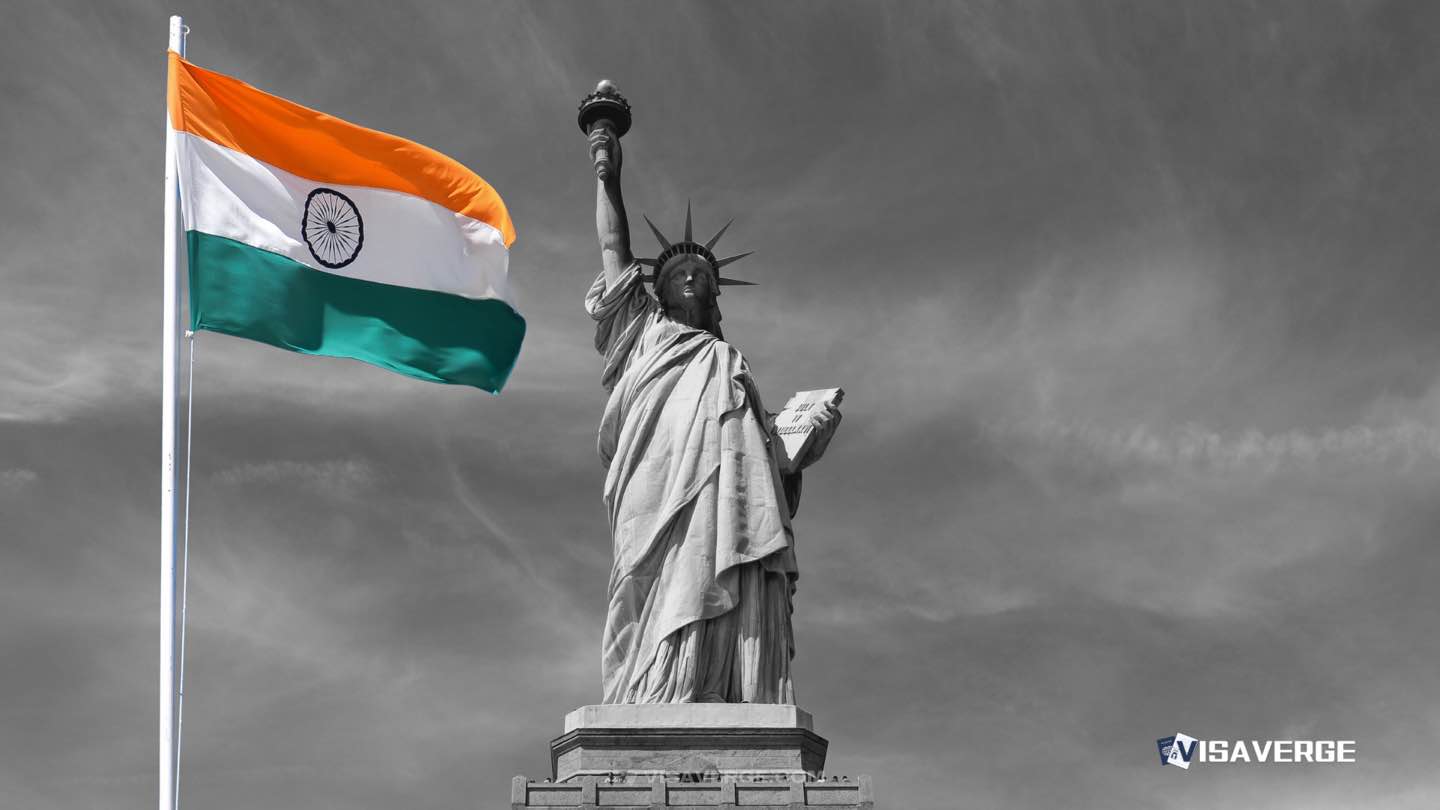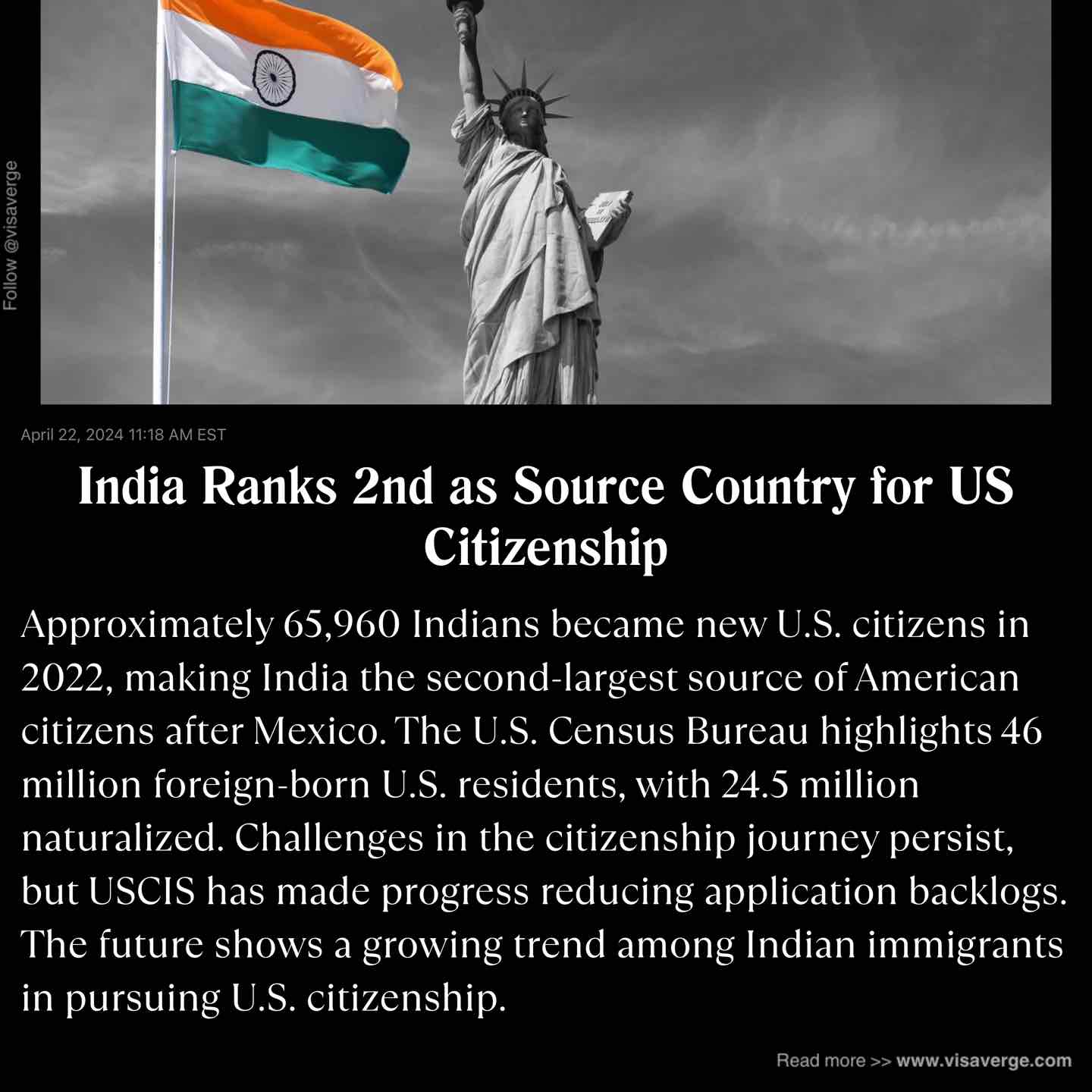Who are the New American Citizens from India?
In the fiscal year 2022, a staggering 65,960 Indians achieved their dreams of becoming new American citizens, positioning India as the second-largest source country for U.S. citizenship, immediately after Mexico. According to a report by the Congressional Research Service (CRS) dated April 15, India’s contribution to the fabric of American society is increasingly pronounced amidst the growing diversity of the nation’s demographics.

What Does the Increase in India-US Citizenship Indicate About Immigration Trends?
The emergence of India as a significant source of new American citizens is noteworthy, especially considering the broader statistics surrounding immigration in the United States. The US Census Bureau’s American Community Survey reveals that as of 2022, there were about 46 million foreign-born residents in the U.S., accounting for 14 percent of the total population of 333 million. Significantly, more than half of this group, approximately 24.5 million, have become naturalized citizens.
Mexico, the top source country, contributed 128,878 new citizens in FY2022, followed closely by India and then the Philippines, Cuba, and the Dominican Republic. This dynamic underscores the diverse origins of the U.S. immigrant population and highlights the varying paths individuals take on their journey to citizenship.
How Accessible is American Citizenship for Indians?
The path to American citizenship is complex and challenging. As indicated by the CRS report, currently, a high percentage (42 percent) of the India-born population in the U.S. does not qualify for citizenship. Despite this, there are around 290,000 India-born legal permanent residents (LPRs) who are eligible for naturalization, suggesting a potential increase in India-US citizenship rates in the coming years.
The eligibility criteria for becoming a U.S. citizen, as outlined by the Immigration and Nationality Act (INA), generally require the individual to have been an LPR for at least five years. This criterion forms the basic threshold one must meet before applying for naturalization.
Are There Challenges in the Naturalization Process?
Indeed, the journey to citizenship is fraught with administrative hurdles. The report from CRS highlights considerable processing delays by the United States Citizenship and Immigration Services (USCIS). Nevertheless, there has been significant progress since the fiscal year 2020. USCIS has managed to reduce the backlog of pending naturalization applications substantially—from 943,000 in FY2020 to about 408,000 at the end of FY2023.
It’s worth noting that while these numbers represent a positive trend in processing efficiency, they also reflect the ongoing high demand for naturalization, clearly illustrating the aspiration of many permanent residents to become U.S. citizens.
What Does the Future Hold for India-US Citizenship Trends?
The data indicates a robust inclination among Indian immigrants towards becoming American citizens, a trend likely to continue given the large number of LPRs from India. Moreover, as administrative processes improve and backlogs decrease, we may see even more individuals reaching this significant milestone.
Applicants interested in understanding more about the naturalization process can find detailed information and resources on the official USCIS website.
Conclusion
The rise in citizenship among Indian-born individuals is a compelling chapter in the broader narrative of U.S. immigration. As the United States continues to enrich its multicultural tapestry, the contributions of new American citizens from diverse backgrounds, including India, play a pivotal role in shaping the future of the nation. Despite existing challenges, the pathway to American citizenship remains a beacon of hope for many, promising not just a new nationality, but the fulfillment of a profound personal and communal aspiration.
Learn Today:
- Naturalized Citizen:
- Definition: A naturalized citizen refers to an individual who was not born a U.S. citizen but has gone through the legal process to become one. This process involves fulfilling specific requirements set forth by the Immigration and Nationality Act (INA) to acquire U.S. citizenship.
- Legal Permanent Resident (LPR):
- Definition: A Legal Permanent Resident (LPR), also known as a Green Card holder, is an individual who has been granted authorization to live and work in the United States on a permanent basis. LPRs are eligible to apply for U.S. citizenship after meeting certain criteria.
- Backlog (in Naturalization Applications):
- Definition: Backlog in naturalization applications refers to the accumulation of pending citizenship applications awaiting processing by the United States Citizenship and Immigration Services (USCIS). Delays in processing can lead to a backlog, impacting the waiting time for applicants seeking to become naturalized citizens.
- Immigration and Nationality Act (INA):
- Definition: The Immigration and Nationality Act (INA) is the primary body of immigration law in the United States. It governs the legal immigration process, including the criteria and procedures for acquiring U.S. citizenship, the rights and obligations of immigrants, and the regulation of various immigration-related matters.
- Foreign-Born Resident:
- Definition: A foreign-born resident is an individual who was born outside the United States and its territories but resides in the country. This term is often used to describe immigrants, including Legal Permanent Residents and naturalized citizens, who contribute to the diverse population of the United States.
This Article In A Nutshell:
In FY 2022, 65,960 Indians became new American citizens, ranking India second after Mexico. Rising diversity enriches the U.S., with 46 million foreign-born residents, 24.5 million naturalized. Despite challenges, 290,000 India-born legal residents qualify for citizenship. Improvements in processing delays hint at more aspiring U.S. citizens. A promising trend for India-US citizenship.
— By VisaVerge.com
Read More
- Tragic End: Indian Student in US Dies Allegedly from the Blue Whale Challenge
Explore the Story -
Legal Dilemma: Indian Student Faces 14 Years in Canadian Jail for Self-Defense Incident
Read more here -
Recognition Struggles: Indian Law Degrees Face Issues in Canada Due to Lack of BCI Approval
Learn More -
Visa Policies Tighten: Australian Universities Halt Applications from Indian Students Amid Visa Crackdown
Discover Details -
Border Challenges: Arrests of Indians at Canada-US Border Surge by 50%
Find out more














